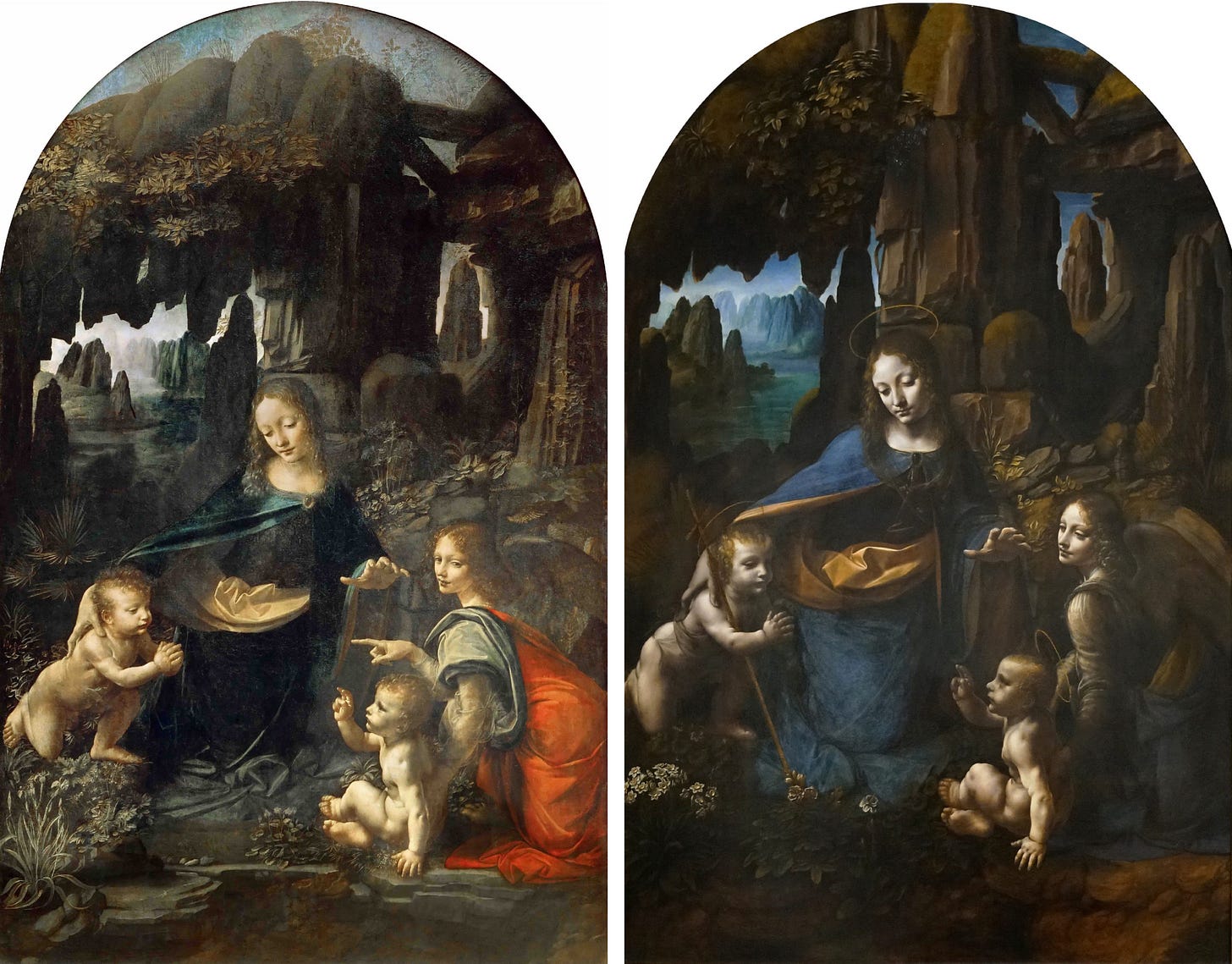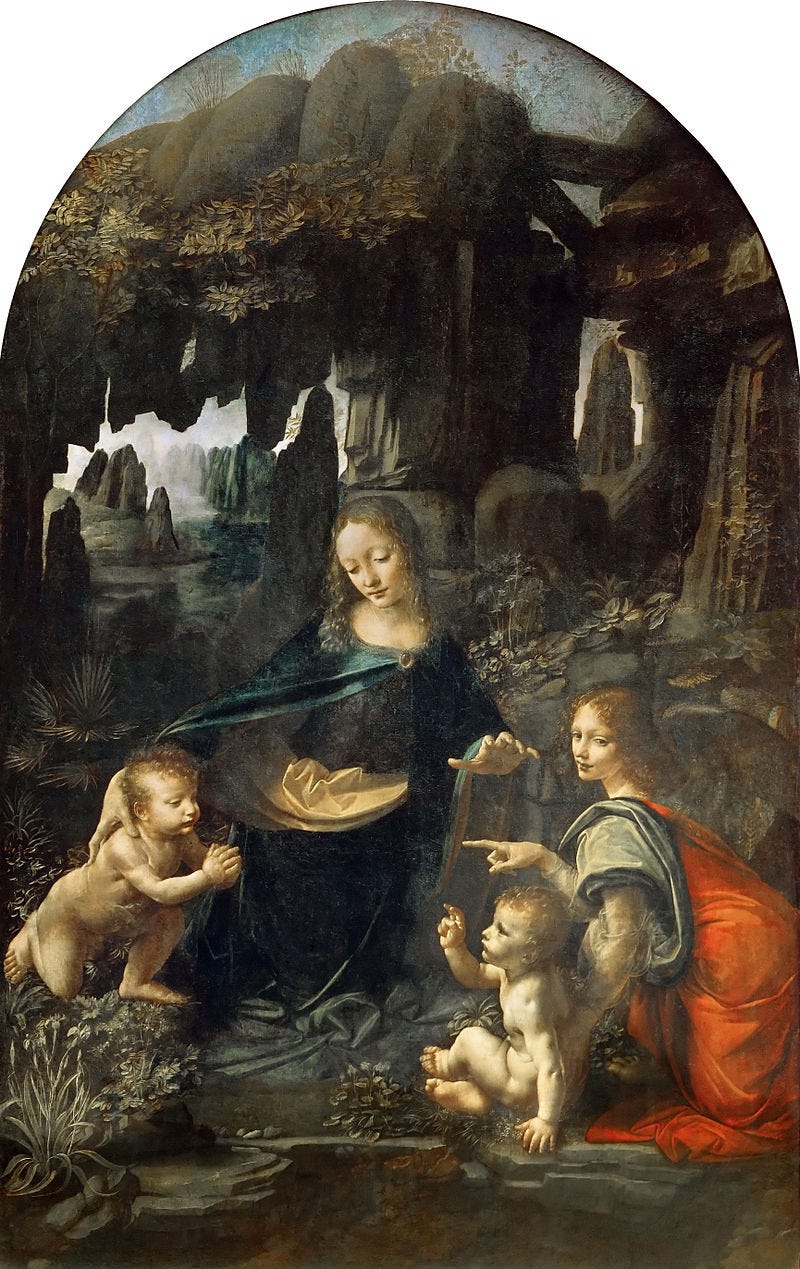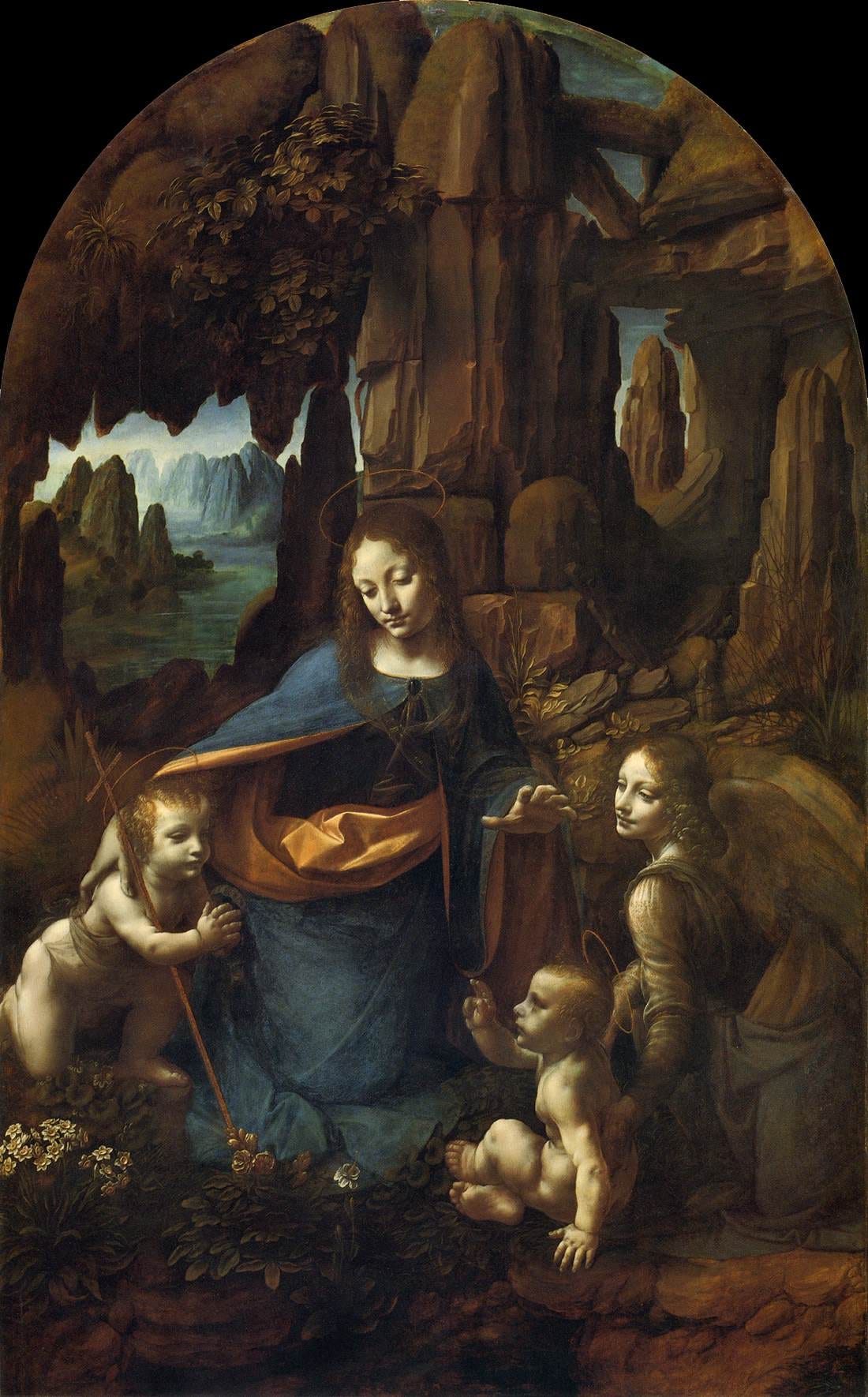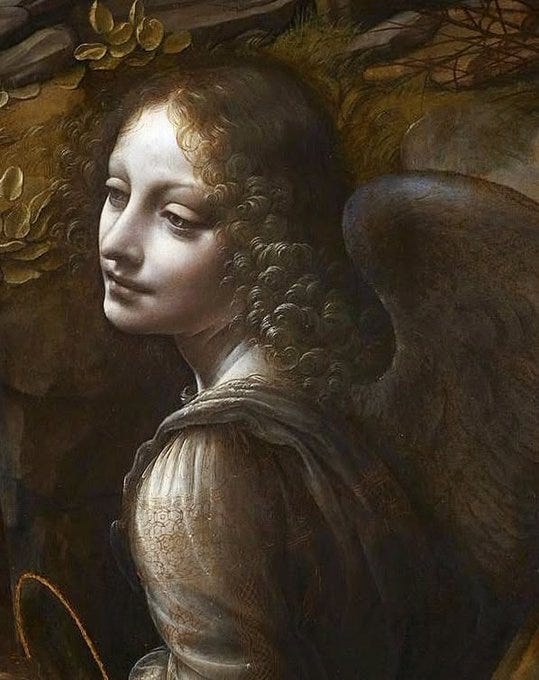Leonardo da Vinci’s Virgin of the Rocks — Two paintings. One genius.
A tale of mystery, mastery, and meaning.
Leonardo da Vinci left us with countless riddles wrapped in beauty. Among his most captivating enigmas are the two versions of The Virgin of the Rocks — one housed in the Louvre, Paris, and the other in the National Gallery, London.
These masterpieces, born from the same divine spark, differ in ways that whisper secrets about Leonardo’s mind, his patrons, and the era that shaped them.
In 1483, the Confraternity of the Immaculate Conception in Milan tasked Leonardo with creating an altarpiece for their chapel in San Francesco Grande. The brief? A depiction of the Virgin Mary, the Christ Child, John the Baptist, and an angel in a rocky grotto, inspired by the Holy Family’s encounter with John during their flight to Egypt. Simple enough for a lesser artist, but Leonardo saw a chance to weave theology, nature, and human emotion into a revolutionary composition.
The result was the Louvre version, a painting so radical it reportedly sparked disputes with the Confraternity.
Why?
Some say Leonardo’s unorthodox style — his misty landscapes, psychological depth, and subtle symbolism, clashed with their expectations. Others hint at financial or contractual squabbles.
Whatever the truth, Leonardo sold the Louvre painting (possibly to a private buyer, maybe even King Louis XII of France), and years later, he produced a second version, now in London, to fulfill the original commission.
The Louvre Version
Step into the Louvre’s Salle de la Joconde, and the Virgin of the Rocks hits you like a quiet thunderbolt.
The Virgin Mary sits at the center, her serene gaze anchoring the scene.
The Christ Child, plump and tender, blesses a kneeling John the Baptist, while an angel points subtly toward John.
The rocky grotto, shrouded in mist, feels like a portal to another world, its jagged forms softened by Leonardo’s signature sfumato.
What makes this version so spellbinding?
It’s Leonardo’s alchemy of light and shadow, his obsession with nature’s geometry.
The distant mountains, the delicate plants at the figures’ feet, the interplay of gestures — all feel alive, pulsating with meaning. The angel’s gaze, locking eyes with us, invites us into the mystery:
Is this a sacred moment or a philosophical meditation on divinity and humanity?
The painting’s palette — cool blues, earthy browns, and golden highlights, creates a dreamlike harmony that feels both intimate and infinite.
Art historians speculate this version was Leonardo’s purest vision, untainted by compromise. Its execution is flawless, with every brushstroke bearing his genius. Yet, its sale suggests it was too bold for its intended home.
The London Version
Now, cross the Channel to London’s National Gallery, and you’ll meet the second Virgin of the Rocks. At first glance, it’s strikingly similar: same composition, same figures, same grotto. But look closer, and differences emerge like whispers in a cathedral.
The colors are warmer, the contrasts sharper.
The figures feel more defined, almost sculptural, but slightly less fluid than their Louvre counterparts.
The angel no longer points, and halos crown the holy figures — a nod to traditional iconography absent in the Louvre’s version.
Was this Leonardo’s hand alone, or did assistants like Ambrogio de Predis play a larger role?
Scholars debate endlessly.
The London painting feels more polished, more 'acceptable to its religious patrons, perhaps reflecting adjustments to appease the Confraternity’s conservative tastes. The rocky background, while still mesmerizing, lacks the Louvre version’s otherworldly haze.
Yet, there’s a solemn beauty here — a reverence that suggests Leonardo aimed to bridge his radical vision with the Church’s expectations.
So, what sets these twins apart?
Atmosphere: The Louvre’s misty, poetic landscape feels like a glimpse into Leonardo’s soul — an artist obsessed with nature’s mysteries. The London version, with its clearer outlines and warmer tones, prioritizes accessibility over enigma.
Symbolism: The Louvre’s angel points to John, hinting at theological nuance (John as the precursor to Christ). The London version omits this gesture, adding halos for clarity and orthodoxy.
Execution: The Louvre painting is unmistakably Leonardo’s, with sfumato so delicate it feels like breath on canvas. The London version, while exquisite, bears traces of workshop involvement — less spontaneity, more calculation.
Intent: The Louvre feels like Leonardo’s rebellion — a manifesto of art as philosophy. The London version is a compromise, a masterpiece tailored to its audience.
Today, these twin Virgins stand as testaments to Leonardo’s ability to transcend time. The Louvre version captivates with its raw, almost mystical energy, while the London version comforts with its refined grace. Together, they remind us why Leonardo remains unmatched — not just for his technical brilliance, but for his courage to question, to dream, and to paint the ineffable.
Next time you’re near Paris or London, go to see one of these treasures in person. Stand before it, let its stillness envelop you, and ask yourself: What does this moment mean to me?
Cultural Canvas is a free publication that thrives on the generosity of its supporters.
Thanks to generous patrons, this publication remains open and accessible to all, ensuring that anyone can enjoy it at no cost. Your support keeps Cultural Canvas free for everyone.





